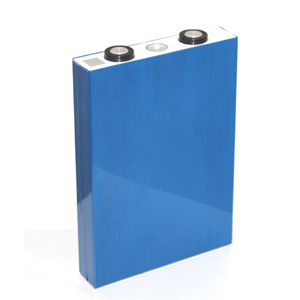Original Factory Electric Bike Battery - 24V 50Ah LiFePO4 Battery Pack – Jinkailai
Short Description:
Original Factory Electric Bike Battery - 24V 50Ah LiFePO4 Battery Pack – Jinkailai Detail:
Dineng Battery Electric Bicycle Lithium LiFePO4 Battery 24V 50Ah
Our selection of LiFePo4 batteries is ideal as a lightweight and long-lasting replacement for lead batteries (lead acid).
With a much lighter weight, rugged tension and long lifespan (approx. 3000 charge cycles), this lithium technology brings important advantages over conventional lead battery technology.
When you buy a battery from Dineng Battery, you buy a product from a specialist with its own production line.
|
Item |
Specifications |
|
Nominal Capacity |
50Ah |
|
Nominal Voltage |
24V |
|
Energy |
1200Wh |
|
Weight |
14KG |
|
Dimension |
L330XW175XH216 MM |
|
Cycle Life(80%DOD) |
≥2500 times |
|
Impedance |
<50mΩ |
|
Charge method |
CV/CC |
|
Housing Material |
ABS box |
|
Charge Temperature |
0-45℃ |
|
Operation Temperature |
-20~60℃ |
Electric vehicle, A Sightseeing Bus, Glof cart, E-bike, E-scooter, E-wheelchair, E-motorcycle
Energy storage, UPS, back-up power, Power tools, Lawn mower, miner’s lamp and etc.
The Best LiFePO4 Batteries: Lithium Vs. Lead Acid
Below is our breakdown of the advantages of lithium electric bicycle batteries over lead-acid counterparts.
<Carrying Capacity>
Equipping a lithium battery into a golf cart enables the cart to significantly increase its weight-to-performance ratio. Lithium golf cart batteries are half the weight of a traditional lead-acid battery, which shaves off two-thirds of the battery weight a golf cart would normally operate with. The lighter weight means the golf cart can reach higher speeds with less effort and carry more weight without feeling sluggish to the occupants.
The weight-to-performance ratio difference lets the lithium-powered cart carry an additional two average-sized adults and their equipment before reaching carrying capacity. Because lithium batteries maintain the same voltage outputs regardless of the battery’s charge, the cart continues to perform after its lead-acid counterpart has fallen behind the pack. In comparison, lead acid and Absorbent Glass Mat (AGM) batteries lose voltage output and performance after 70-75 percent of the rated battery capacity is used, which negatively affects carrying capacity and compounds the issue as the day wears on.
<No Maintenance>
One of the major benefits of lithium batteries is that they require no maintenance whatsoever, whereas lead-acid batteries regularly need to be checked and maintained. This ultimately results in saved man hours and the extra costs of maintenance tools and products. The lack of lead-acid means that chemical spills are avoided and the chance of downtime on your golf car is drastically reduced.
<Battery Charging Speed>
Regardless if you’re using a lead-acid battery or a lithium battery, any electric car or golf cart faces the same flaw: they have to be charged. Charging takes time, and unless you happen to have a second cart at your disposal, that time can put you out of the game for a while. A good golf cart needs to maintain consistent power and speed on any course terrain. Lithium batteries can manage this without a problem, but a lead-acid battery will slow the cart down as its voltage dips. Plus after the charge has dissipated, it takes an average lead-acid battery roughly eight hours to recharge back to full. Whereas, lithium batteries can be recharged up to 80 percent capacity in about an hour, and reach full charge in less than three hours.
Plus, partially-charged lead-acid batteries sustain sulfation damage, which results in significantly reduced life. On the other hand, lithium batteries have no adverse reaction to being less than fully charged, so it’s okay to give the golf cart a pit-stop charge during lunch.
<Eco-Friendly>
Lithium batteries put less strain on the environment. They take significantly less time to fully charge, resulting in using less energy. They do not contain hazardous material, whereas lead-acid batteries, as the name suggests, contain lead which is harmful to the environment.
Battery Cycle Life
Lithium batteries last significantly longer than lead-acid batteries because the lithium chemistry increases the number of charge cycles. An average lithium battery can cycle between 2,000 and 5,000 times; whereas, an average lead-acid battery can last roughly 500 to 1,000 cycles. Although lithium batteries have a high upfront cost, compared to frequent lead-acid battery replacements, a lithium battery pays for itself over its lifetime. Not only does the investment in a lithium battery pay for itself over time, but big savings can be made in the way of reduced energy bills, maintenance costs, and possible repairs that would otherwise need to be made to heavy lead-acid golf cars. They also just perform better overall!
1. Enquiry reply in 2~24 hours
2. Suggestion for workable solutions
3. OEM&ODM manufacturer with various designs
4. Reliable quality, competitive price, fast delivery, excellent service
5. Solid package, stable shipment,100% testing and inspection before shipping to ensure the quality
6. Meets CE,ROHS,UN38.3,MSDS etc certification standard
Product detail pictures:

Related Product Guide:
What Car Battery Should You Choose?
The Best Time to Replace Your Car Battery
Just about every member from our large efficiency income crew values customers' wants and enterprise communication for Original Factory Electric Bike Battery - 24V 50Ah LiFePO4 Battery Pack – Jinkailai, The product will supply to all over the world, such as: Lahore , Estonia , Sweden , With a wide range, good quality, reasonable prices and stylish designs, our products are extensively used in beauty and other industries. Our products are widely recognized and trusted by users and can meet continuously changing economic and social needs.
This is a very professional wholesaler, we always come to their company for procurement, good quality and cheap.











